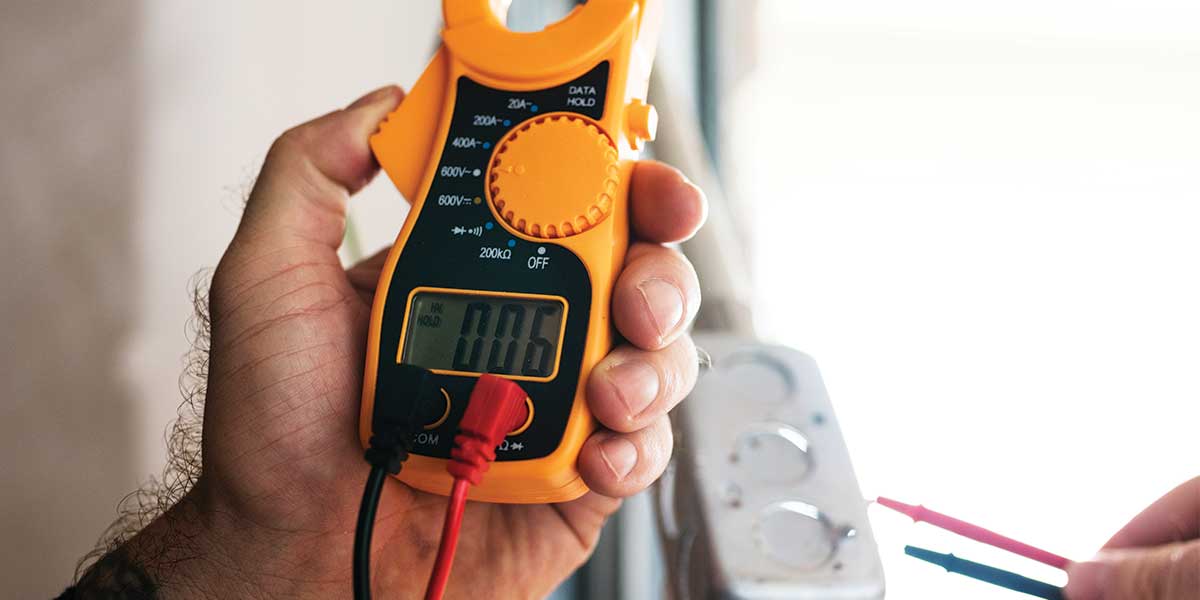In today’s energy-conscious world, understanding how your home or business consumes power isn’t just helpful, it’s essential. One of the most important distinctions in electrical systems is the difference between low-voltage and line-voltage configurations. Whether you’re planning a lighting renovation, installing new appliances, or simply optimizing for energy efficiency, this foundational knowledge can guide better decisions and cost savings.
At Expert Electric, our licensed electricians bring decades of combined experience to every project, ensuring your property gets the safest and most efficient electrical setup, no matter the voltage.
Understanding the Basics: What is Voltage?
Before diving into the details, let’s define voltage. In simple terms, voltage is the force that pushes electrical current through a circuit. Think of it like water pressure in plumbing. The higher the pressure, the more electricity moves through the wires.
There are two common categories of voltage in residential and commercial settings:
- Line voltage (also known as standard voltage)
- Low voltage
Each serves unique purposes and comes with its own pros and cons.
What is Line Voltage?
Line voltage is the standard electrical voltage used in most homes and commercial buildings. In North America, this typically means:
- 120 volts for standard lighting and receptacles
- 240 volts for larger appliances like dryers or ovens
This type of system runs directly off your building’s main electrical service and does not require a transformer. It’s used for most general-purpose circuits, including:
- Ceiling lights
- Receptacles (power outlets)
- High-wattage outdoor fixtures
- Kitchen appliances
Key Characteristics of Line Voltage:
- Operates at 120V or 240V
- Easy to install without transformers
- Ideal for high-load or general-purpose lighting
- Greater wiring flexibility over long distances
However, since more electricity flows through line-voltage systems, they pose a higher risk of electrical shock or fire if installed or maintained improperly.
What is Low Voltage?
Low-voltage systems, by contrast, use a transformer to reduce the voltage from 120V down to 12V or 24V. This makes them safer and often more energy-efficient, especially for specialty lighting and controls.
Common Uses of Low Voltage:
- Landscape lighting
- Under-cabinet lighting
- Recessed and track lighting
- Doorbells, thermostats, and smart controls
- LED accent lighting
Key Features of Low Voltage:
- Operates at 12V or 24V
- Requires a transformer
- Safer for outdoor and wet applications
- Longer bulb lifespan and better efficiency
The lower power flow in these systems means reduced energy waste, making low-voltage lighting a popular choice for environmentally conscious homeowners.
Main Differences Between Low-Voltage and Line-Voltage
| Feature | Low Voltage | Line Voltage |
|---|---|---|
| Voltage Level | 12V or 24V | 120V or 240V |
| Transformer Required | Yes | No |
| Safety | Safer due to lower voltage | Requires more caution |
| Installation Complexity | Moderate to high | Generally simpler |
| Application | Accent, landscape, smart tech | General home use, large appliances |
| Energy Efficiency | Often more efficient | Less efficient per fixture |
| Cost | Higher upfront (transformer) | Lower upfront |
| Maintenance | Less frequent | Bulbs may need frequent replacement |

How Do Low-Voltage Lights Save Power?
It’s important to note that voltage doesn’t equate directly to energy use. A 50-watt low-voltage bulb draws the same power as a 50-watt line-voltage bulb. However, low-voltage systems are more efficient in converting that wattage into visible light, often providing:
- Better color rendering
- Focused, directional light
- Reduced light scatter
- Longer bulb lifespan
This means fewer fixtures may be needed to light a space effectively, especially outdoors or in recessed indoor applications. According to the U.S. Department of Energy’s guide on lighting choices, selecting the right bulb and fixture can have a big impact on your home’s energy consumption and utility costs.
Where Should You Use Line Voltage?
Line voltage is best suited for:
- General room lighting
- Ceiling fans and fixtures
- Garage or basement lighting
- Power-hungry appliances
Because these systems run directly off your main electrical panel, they can handle higher loads and do not require any extra components for basic operation.
Where Should You Use Low Voltage?
Low voltage is ideal for:
- Outdoor lighting: Safer in wet environments
- Hard-to-reach areas: Reduces the frequency of maintenance
- Accent lighting: LED strips, cabinet lighting, and art displays
- Smart homes: Easily integrated with automation systems
Want a cozy, energy-efficient home ambiance? Low-voltage solutions offer a sleek, modern look with flexible design possibilities.
Pros and Cons at a Glance
Pros of Low Voltage:
- Energy-efficient
- Safer to handle
- Long-lasting bulbs
- Ideal for small-scale or focused lighting
Cons of Low Voltage:
- Requires transformer
- Shorter wire runs
- Installation can be more involved
Pros of Line Voltage:
- Handles high power loads
- No transformers needed
- Works with most standard fixtures
Cons of Line Voltage:
- Greater safety risks
- Less efficient in some applications
- Higher long-term energy usage
How to Choose the Right Voltage for Your Needs
When deciding between low-voltage and line-voltage systems, consider the following:
- Purpose: Is it decorative, task lighting, or general use?
- Location: Wet vs. dry, indoor vs. outdoor
- Energy efficiency goals
- Budget for upfront costs vs. long-term savings
- Need for smart or dimmable systems
Still unsure? Let the professionals at Expert Electric help you choose and install the right system for your space and budget.
FAQs: What is the Difference Between Low-Voltage and Line-Voltage?
Is low voltage always better than line voltage?
Not always. Low-voltage systems are ideal for targeted lighting or safety-sensitive areas. However, line-voltage systems are better for general lighting and high-power appliances.
Can I replace a line-voltage light with a low-voltage one?
Yes, but it requires installing a transformer and ensuring the wiring supports the voltage change. Always consult an electrician to avoid safety hazards.
Which is more expensive: low-voltage or line-voltage?
Low-voltage systems tend to have higher upfront costs due to transformers and specialized fixtures, but they save money in the long run with energy efficiency and lower maintenance.
Do LED lights require low voltage?
Not necessarily. LEDs come in both line-voltage and low-voltage variants. The choice depends on the fixture design and application.
What’s safer for outdoor use?
Low-voltage lighting is generally safer for outdoor and wet conditions, as it minimizes the risk of electric shock.
Final Thought: Voltage Choice Impacts Efficiency, Aesthetics, and Safety
Whether you’re remodeling your kitchen or lighting up your backyard oasis, understanding the difference between low-voltage and line-voltage can save you time, money, and future headaches. From reduced energy bills to sleek aesthetics and increased safety, the right system enhances every corner of your home or business.
At Expert Electric, we go beyond the wires, we power peace of mind. Let our team of certified electricians walk you through your best lighting and electrical options today.
Contact Expert Electric
Ready to make the switch or need help deciding which system suits your property?
📞 Call Us: 604-681-8338
📧 Email Us: info@expertelectric.ca
Your journey to a brighter, more efficient space starts with Expert Electric, where excellence is just a call away.


